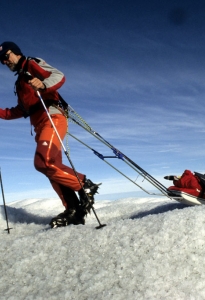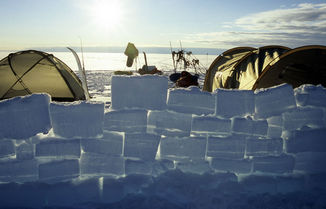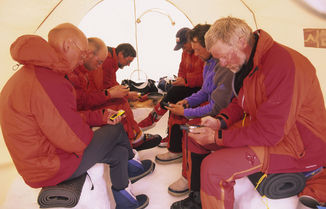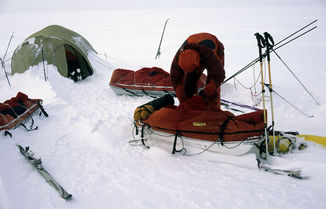Searching for the traces in the Ice
Prof. Dr.-Ing. Wilfried Korth
25.May 2010
The climate change is a constant topic in the media. From a global viewpoint, 2007 is expected to be one of the warmest years ever. The North Pole can now almost be reached without using icebreakers. The ozone hole above the Antarctic has grown larger than ever before. The largest glaciers on earth react very responsively to global climate changes. The changes in Greenland’s ice mass are also important indications for climate processes all across the globe. It is thus incredibly fascinating to search for traces of global warming in Greenland. In 2002, led by the mountaineer and geodesist Wieland Adler of Dresden, a team of four measured (to the centimeter) the height of the ice along a 700 km-long traverse across the inland ice of Greenland. This was a historical route that the Swiss meteorologist Alfred de Quervain first traversed in 1912.
In order to see the changes in the glaciers, one has to make repeated measurements. Thus, the first repeat measurements began last summer. We had to achieve an average of 20 km per day, on skis and pulling our sleds behind us. The exact same route was taken with an identical time plan as in 2002. That might sound simple, but it is not! In 2002, the group covered the greatest distances possible. This year, the same distances had to be achieved each day, regardless of the weather and snow conditions. We only had a leeway of two to three days. The physical challenges were enormous, which resulted in a great psychological burden on the expedition group. We usually marched for eight hours a day. It was only somewhat less exhausting on the few days we sailed. We are proud to say that the goals of the expedition were more than fulfilled.
We were able to determine 33 of the 35 measurement points from 2002. In addition to the expedition program, glacier speed measurements were recorded at the Ilulissat Icefjord as part of a series of measurements by the TU Dresden. This glacier is one of the fasting moving ones on earth. It has doubled its speed in the last five years to over 40 meters per day (!), which represents a dramatic change in its mass. A large portion of our route led through this area. There is an increase in height of the ice mass above 2,000 meters of about 10 cm per year. That does not contradict the predictions, as the climate warming results in an increase in evaporation, which then leads to an increase in precipitation, which comes as snow at Greenland’s high altitudes. Below 2000 meters, the surface level is decreasing by an average of 1.5 meters per year! The ice mass of Greenland is thus decreasing dramatically.



